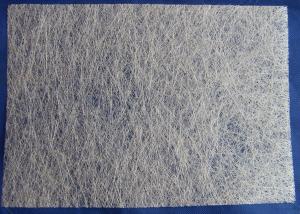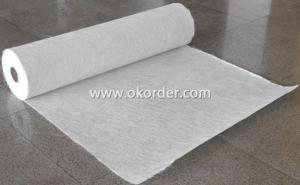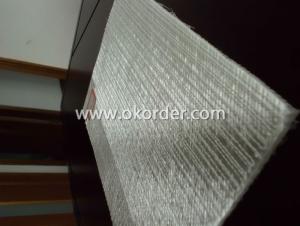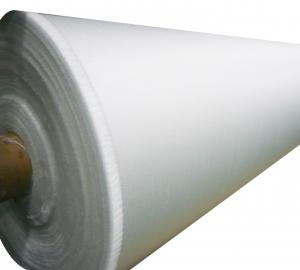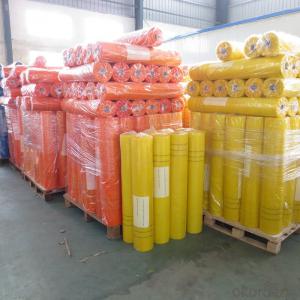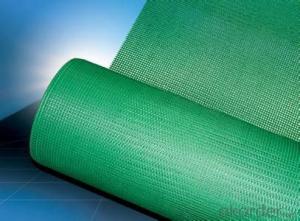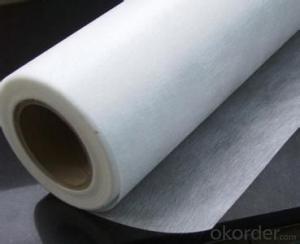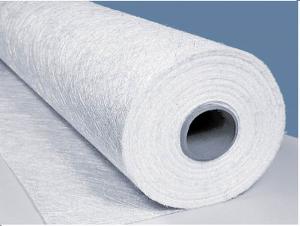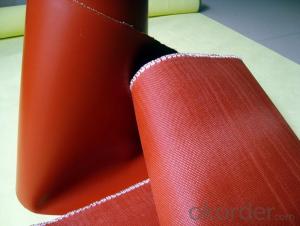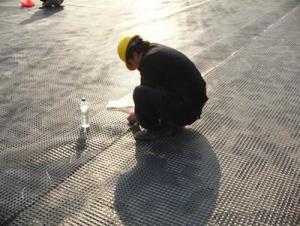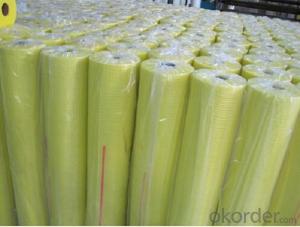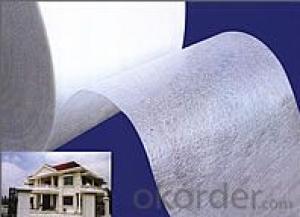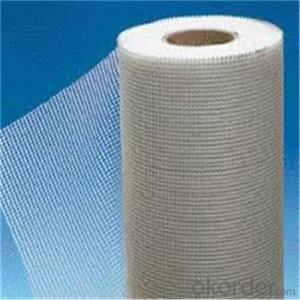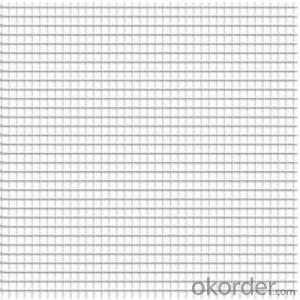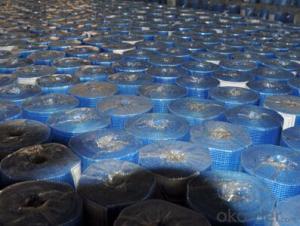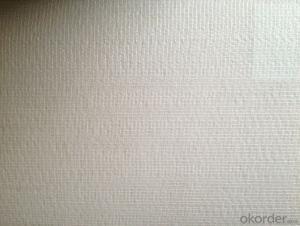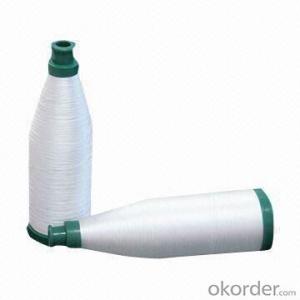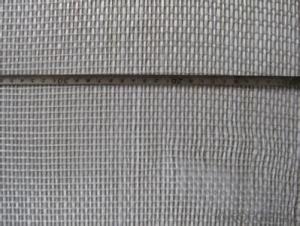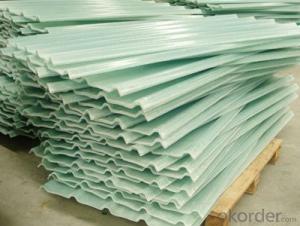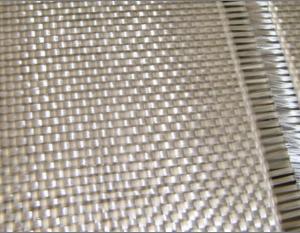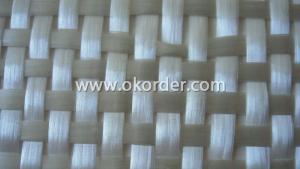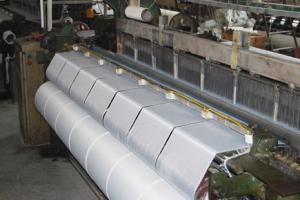High Quality Fiberglass Mesh Fabric Mat for Roofing
- Loading Port:
- Qingdao
- Payment Terms:
- TT or LC
- Min Order Qty:
- 10000 M2 m²
- Supply Capability:
- 50000000 M2 Per Year m²/month
OKorder Service Pledge
OKorder Financial Service
You Might Also Like
Introduction of High Quality Fiberglass Mat for Roofing:
The High Quality Fiberglass Mat for Roofing is usually used as substrates for water-proof roofing materials.It is an ideal substrate material for asphalt roofing rool and singles. The High Quality Fiberglass Mat for Roofing can also act as the lining for roof insulation layers to protect polyester foam insulation from the damaging effect caused by chemical solvent so as to prelong the lifetime.
Data Sheet of High Quality Fiberglass Mat for Roofing:
item | unit | FS90 | FS50 | FS60 | FS60-J30 | FS90-J30 |
linear density of yarn | tex | ----- | ----- | ---- | 34--58 | 34--68 |
space between yarns | mm | ----- | ------- | ----- | 30 | 30 |
area weight | g/m² | 90 | 50 | 60 | 60 | 90 |
bender content | % | 20 | 18 | 18 | 18 | 20 |
tensile strength MD | N/5cm | >330 | >220 | >230 | >260 | >360 |
tensile strength CMD | N/5cm | >260 | >150 | >170 | >160 | >240 |
wet strength | N/5cm | >98 | >60 | >63 | >63 | >988 |
width×length | m×m | 1.0×1500 | 1.0×2500 | 1.0×2000 | 1.0×2000 | 1.0×1500 |
Roll diameter | mm | <117 | <117 | <117 | <117 | <117 |
Specifications of High Quality Fiberglass Mat for Roofing:
High tensile strength:
corrosion and water resistance
easy satyration by bitumen
high porosity
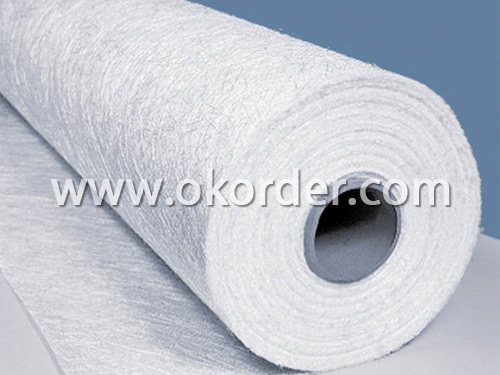
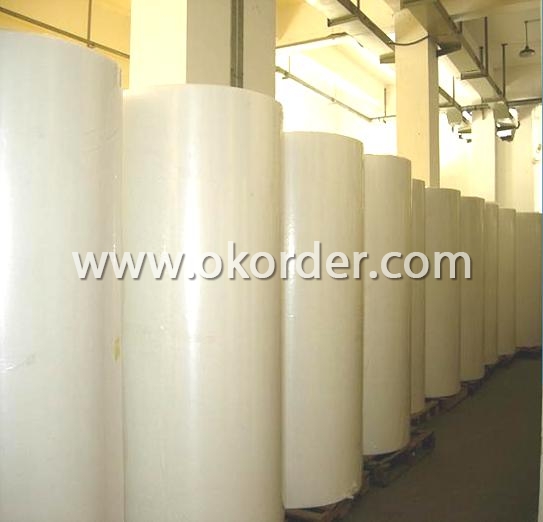
- Q: Problems in making FRP models and models
- Method of making die at the end of the lowest cost, is artificial cutting and polishing, wood or other materials can have certain hardness and easy processing stuff, but it requires a very high skill, good feel, and often do it is not precise enough, but for ship model, basically is sufficient.
- Q: How is fiberglass fabric cut and shaped?
- Fiberglass fabric is typically cut and shaped using a few different methods. One common method is to use scissors or a utility knife to cut the fabric to the desired size and shape. This method is commonly used for smaller or more intricate cuts. For larger cuts or more precise shaping, a technique called "hot knife cutting" is often employed. This involves using a heated blade or wire to cleanly cut through the fiberglass fabric. The heat helps to seal the edges of the fabric, preventing fraying and ensuring a smooth finish. Another method used for shaping fiberglass fabric is molding. In this process, the fabric is laid over a mold or form and then a resin or adhesive is applied to secure it in place. The fabric is then allowed to cure or harden, taking on the shape of the mold. This method is commonly used in the production of fiberglass products such as boat hulls or automotive parts. Overall, the cutting and shaping of fiberglass fabric requires precision and attention to detail. Whether using scissors, a hot knife, or molding techniques, it is important to ensure clean cuts and proper shaping in order to achieve the desired result.
- Q: Can fiberglass fabric be used for insulation sleeves?
- Yes, fiberglass fabric can be used for insulation sleeves. It has excellent thermal insulation properties, is fire-resistant, and can withstand high temperatures, making it an ideal choice for insulating sleeves.
- Q: What are the different fiberglass fabric finishes for antistatic properties?
- There are several different fiberglass fabric finishes that can provide antistatic properties. Some common finishes include carbon coating, metalized coating, and conductive polymer coating. These finishes help to dissipate static charges and prevent the buildup of static electricity on the fabric surface.
- Q: How does fiberglass fabric perform in terms of breathability?
- Fiberglass fabric is known for its excellent performance in terms of breathability. Due to its woven structure, it allows air to circulate freely, making it highly breathable compared to other materials. This breathability is crucial in various applications, such as insulation, where it allows moisture and condensation to escape, preventing the buildup of mold and mildew. Additionally, fiberglass fabric's breathability ensures comfort for the wearer, as it allows heat to dissipate, keeping the body cool and dry. Overall, fiberglass fabric's breathability is a key characteristic that contributes to its widespread use in various industries and applications.
- Q: What fiber fabric can be replaced by fiberglass instead of itchy?
- At present, the main production of glass magnesium plate is glass fiber cloth, but fiberglass cloth has many kinds of quality specifications, mainly divided into high alkali cloth, medium alkali cloth and alkali free cloth, and no alkali cloth, also called white gold cloth.
- Q: Is fiberglass fabric resistant to chemicals in mining operations?
- Yes, fiberglass fabric is generally resistant to chemicals in mining operations. Fiberglass is known for its exceptional chemical resistance, making it an ideal choice for various industrial applications, including mining operations. It is highly resistant to a wide range of chemicals, including acids, alkalis, solvents, and corrosive substances commonly found in mining environments. This resistance ensures that the fabric remains durable and unaffected by chemical exposure, providing a reliable and long-lasting solution for protective clothing, equipment covers, and other applications in mining operations.
- Q: Can fiberglass fabric be used for heat-resistant blankets?
- Yes, fiberglass fabric can be used for heat-resistant blankets.
- Q: Can fiberglass fabric be used for upholstery?
- Yes, fiberglass fabric can be used for upholstery. It is commonly used for its durability and resistance to heat and chemicals. However, it is important to note that fiberglass fabric may not provide the same level of comfort and softness as traditional upholstery materials like fabric or leather.
- Q: What are the different fiberglass fabric weaves for chemical resistance?
- Chemical resistance can be achieved through various fiberglass fabric weaves. Examples of commonly used weaves include plain, twill, satin, and leno. The plain weave is the most basic pattern, with fibers crisscrossing over and under each other in a simple over-under arrangement. This weave provides good strength and chemical resistance, making it suitable for a wide range of applications. Twill weave, on the other hand, is a more intricate pattern where fibers interlace diagonally. This creates a sturdy fabric with improved drapability and tear resistance. Industries requiring chemical resistance, like chemical processing plants, often utilize twill weave fiberglass fabric. The satin weave is a compact pattern that results in a smooth and glossy surface. This weave offers excellent flexibility and chemical resistance, making it ideal for applications where the fabric needs to conform to complex shapes or undergo repeated flexing, such as the production of chemical-resistant gloves. Leno weave is a unique pattern where warp yarns twist around weft yarns, forming a mesh-like structure. This weave provides outstanding stability and prevents unraveling, making it suitable for applications where chemical resistance and durability are vital, like the manufacture of chemical-resistant aprons or curtains. Since each fiberglass fabric weave offers different levels of chemical resistance and other properties, it is crucial to select the appropriate weave based on the specific requirements of the application. Consulting with a fabric specialist or manufacturer is always recommended to determine the most suitable fiberglass fabric weave for chemical resistance in a particular application.
1. Manufacturer Overview
| Location | Shandong, China |
| Year Established | 1964 |
| Annual Output Value | Above US$ 20 Million |
| Main Markets | 20.00% North America 20.00% South America 10.00% Eastern Europe 10.00% Southeast Asia 10.00% Northern Europe 10.00% South Asia 10.00% Western Europe 5.00% Africa 5.00% Mid East |
| Company Certifications | ISO9001:2000 |
2. Manufacturer Certificates
| a) Certification Name | |
| Range | |
| Reference | |
| Validity Period |
3. Manufacturer Capability
| a) Trade Capacity | |
| Nearest Port | Qingdao Port |
| Export Percentage | 31% - 40% |
| No.of Employees in Trade Department | 10-20 People |
| Language Spoken: | English; Chinese; |
| b) Factory Information | |
| Factory Size: | Above 200,000 square meters |
| No. of Production Lines | Above 10 |
| Contract Manufacturing | Design Service Offered; Buyer Label Offered |
| Product Price Range | High; Average |
Send your message to us
High Quality Fiberglass Mesh Fabric Mat for Roofing
- Loading Port:
- Qingdao
- Payment Terms:
- TT or LC
- Min Order Qty:
- 10000 M2 m²
- Supply Capability:
- 50000000 M2 Per Year m²/month
OKorder Service Pledge
OKorder Financial Service
Similar products
Hot products
Hot Searches
Related keywords
